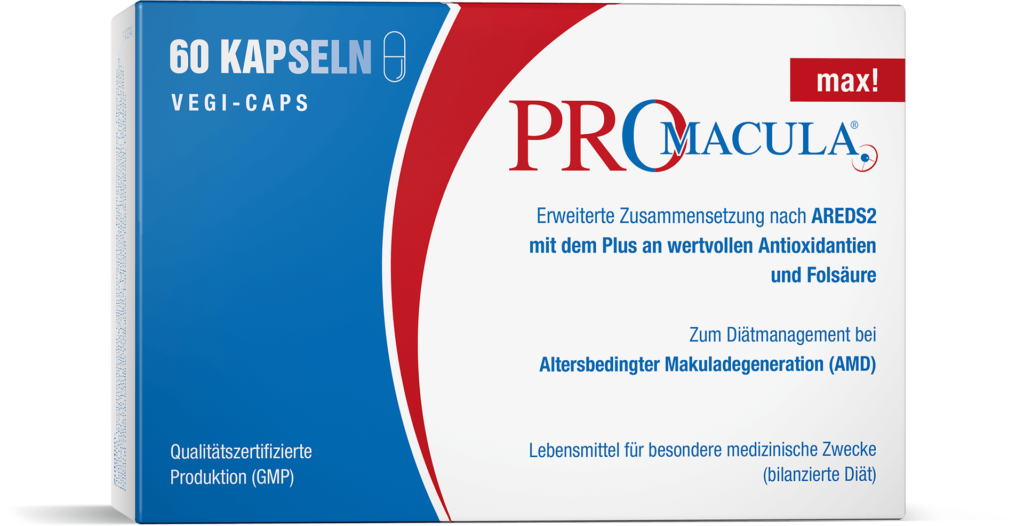Age-related macular degeneration
The macula is the spot with the sharpest vision. It is precisely on this part of the retina where by far the highest density of sensory cells are found. Unfortunately, as you get older, metabolic residues deposit themselves, which can impair the functioning of the sensory cells. An under-supply of critical micronutrients to the retina as the disease progresses leads in the worst cases to the death of the sensory cells.
The role of sensory cells is also explained very well in this video:
What types of AMD are there?
Differentiation should be made between dry and wet age-related macular degeneration – abbreviated as AMD.
-
Dry AMD
The dry form of macular degeneration is the most common with about 80%. The loss of light-sensitive cells of the retina takes place over years, so that the deterioration of vision is slow and the ability to read is usually maintained for many years. However, the problem is that dry AMD can progress to wet AMD, which results in rapid vision loss. PROMACULA® offers scientifically proven protection with the AREDS2 formulation to reduce this risk.
-
Wet AMD
The wet form of macular degeneration occurs less frequently. However, the process of vision loss is much faster and more aggressive. As pathological blood vessels grow into the retina, the vessel walls become leaky – blood components and fluid can escape (= choroidal neovascularization). New, unstable vessels form in the retinal area. Progressive scarring with destruction of the sensitive nerve layer of the retina and massive loss of vision are the consequences. If left untreated, complete blindness may result.
-
Diabetic macular oedema
In diabetic macular edema (DME), also known as diabetic retinopathy, diabetes mellitus causes a change in the retina with blood backing up in the retinal area because the blood can no longer drain through the veins undisturbed. Most of the time this disease can be treated well. For targeted therapy, a distinction must be made between non-proliferative diabetic retinopathy and proliferative diabetic retinopathy.

PROMACULA® max! is also suitable for patients with diabetic retinopathy.
Disease in the area of the sharpest vision can also be associated with cataracts or glaucoma.





